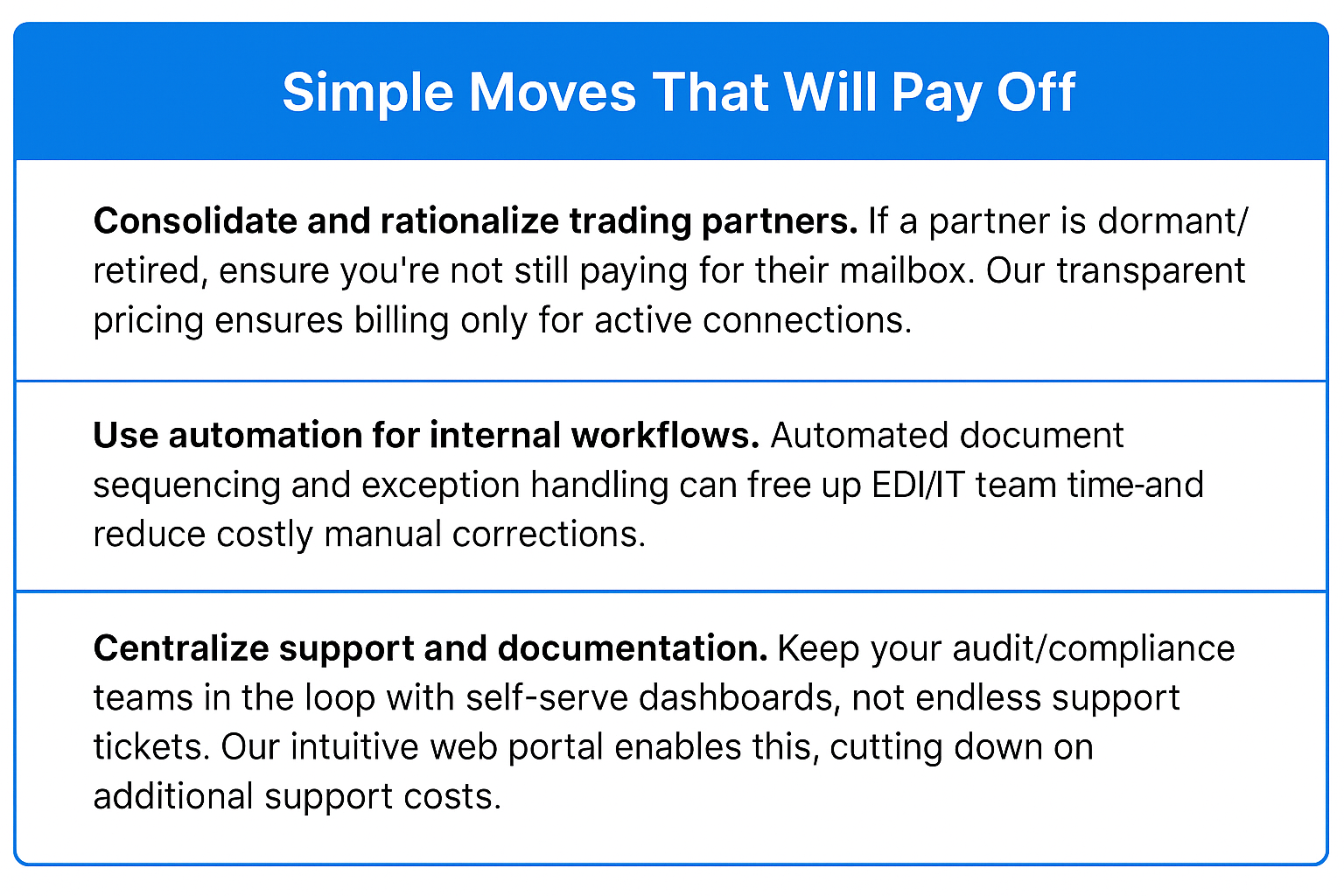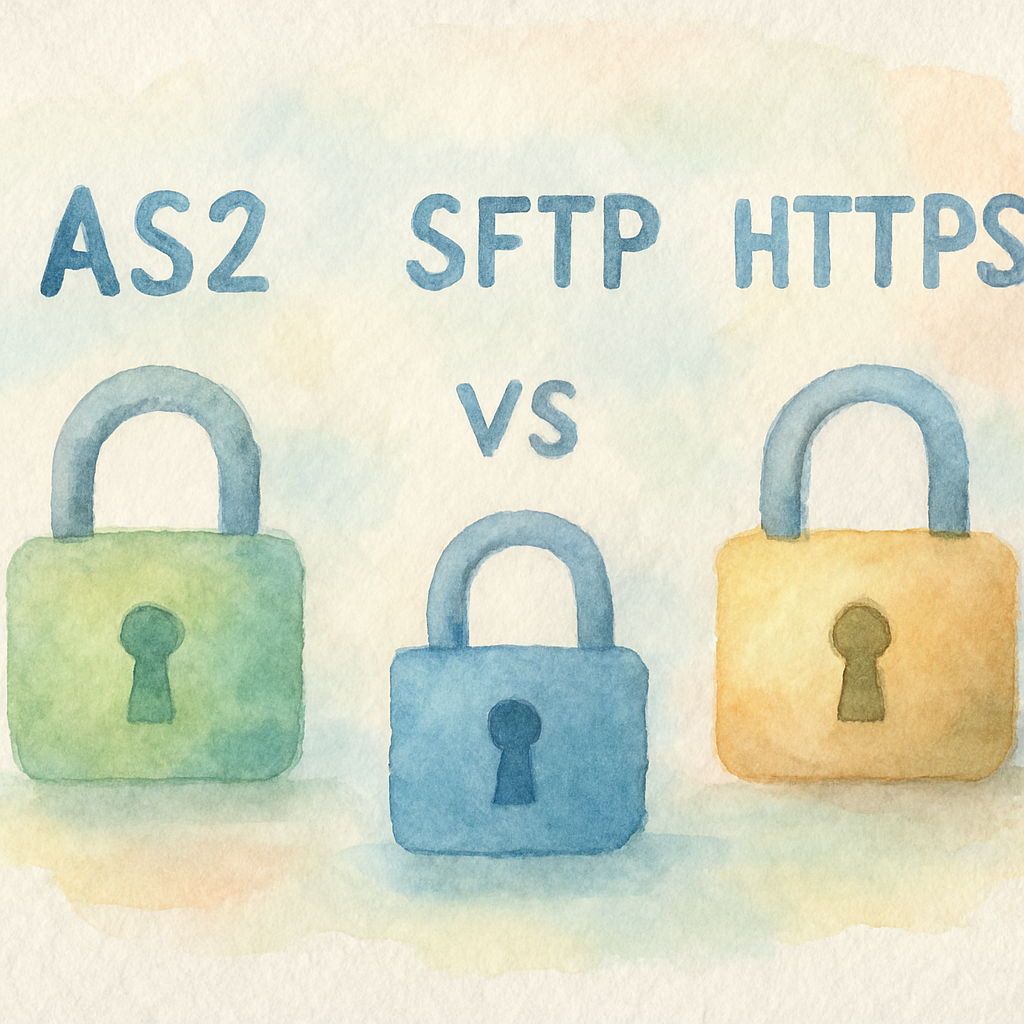
Managing EDI integration costs is top of mind for every CFO, IT director, or EDI coordinator charged with keeping compliance and security airtight—without blowing the budget. At BOLD VAN, we work with manufacturers, distributors, and supply chain leaders who ask the same two questions: “Can we cut EDI expenses?” and “Will we expose ourselves to security or compliance risk by doing so?” The good news? You absolutely can save—if you rethink ‘cost’ and harness the right strategies. We’re sharing what works for our customers (and how our approach is changing the EDI landscape), so you can achieve efficiency, security, and compliance at the same time—not just in theory, but in daily operations.

Traditional approaches to EDI have a reputation for nickel-and-diming customers—not just in kilo-character charges, but also through unexpected add-ons: mailbox fees, document fees, archival surcharges, even viewing your own transactions. Many businesses only realize the true cost once they get their monthly bill or hit a compliance snag. The first step to cost control is getting complete transparency into where your spend actually goes:
The result? A lack of predictability—and a huge incentive to look for smarter alternatives. So, how do you cut costs without risking compliance or weakening security protocols?

One of the most effective ways to control spend is eliminating volume-based billing altogether. That’s why BOLD VAN pioneered Trading Partner Pricing: you pay a flat rate for the partners you actually exchange data with—no matter the number of transactions or documents. This supports predictable budgeting and scales smoothly as your network grows, freeing you from the unpredictability of traditional kilo-character or per-document billing.
This one adjustment can cut EDI bills by up to 82% for some customers, especially as their B2B or supply chain activity grows seasonally.

On-premise EDI stacks require not just licensing fees, but server upkeep, manual updates, security patching, and dedicated IT staff who could spend time elsewhere. Cloud-based models eliminate hardware/maintenance costs and centralize updates, encryption, and compliance for you. BOLD VAN’s solutions are cloud- and web-based, allowing:
Custom EDI mapping and integrations have a reputation for spiraling budgets—every time a partner tweaks their requirements or you change your ERP, costs mount dangerously. Instead, choose providers with deep experience in plug-and-play integrations for major platforms (NetSuite, SAP, Oracle, Infor, Dynamics, etc.) and who maintain up-to-date map libraries. This means:
We routinely migrate trading partners at no charge, and keep maps consistent so you don’t need a consultant every update cycle.
Surprisingly, support fees and compliance audits can balloon, especially if your provider treats these as separate billable services. Instead, work with a VAN that bundles:
This not only saves time/money on compliance headaches—it keeps auditors happy, reduces chargebacks, and helps you avoid future fines.
It’s natural to worry that “cheaper EDI” means riskier EDI. But cost control and compliance can (and should) go hand in hand. Here’s how to do both:
Beyond the underlying platform, there are some simple process-driven moves with a big impact, especially for manufacturers navigating a network of trading partners:


If your EDI bill is unpredictable, your IT team is stretched, or compliance is keeping you up at night, it’s time to move to a modern solution that puts security, compliance, and cost control on equal footing. Schedule a demo with BOLD VAN and see how we’re leading the charge for transparent, secure, and truly affordable EDI. We’re ready to help you rethink EDI from the ground up—without compromise.

Master EDI protocol selection. From AS2 digital certificates to SFTP simplicity, find the best way to connect with 3PLs and retailers. Streamline your manufacturing EDI and lock in predictable pricing with BOLD VAN.

Tired of juggling different EDI specs for Target, Walmart, and Amazon? Centralize your 850s, 856s, and 810s into a single secure flow. No mailbox fees, no setup fees—just predictable, scalable retail EDI growth.

Master AS2 certificate management in under 15 minutes. Learn how to generate, plug in, and rotate EDI certificates with zero downtime. Avoid costly supply chain disruptions and keep your B2B transactions secure with expert tips from BOLD VAN.